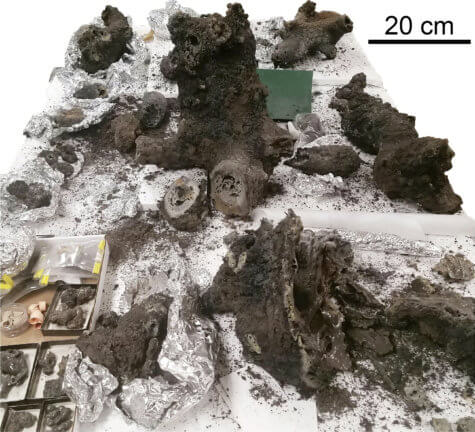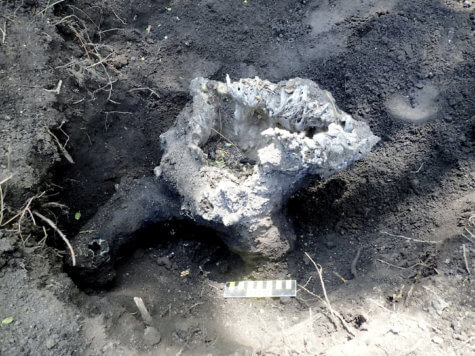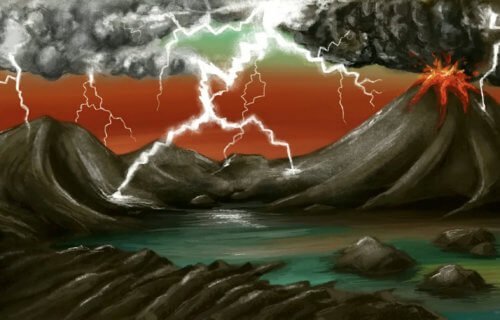NEW HAVEN, Conn. — As a famous television show once said, “there are those who believe that life here began out there.” While some studies point to this theory that meteorites from space seeded the Earth with life, a new report finds the actual spark may have come from lightning. Researchers believe countless lightning strikes helped to unlock a key ingredient of DNA, RNA, and other molecules.
Lead author Benjamin Hess from Yale University explains that up to a quintillion bolts may have unlocked the mineral phosphorus; necessary to form complex biomolecules that create the building blocks of life. As for that quintillion figure, that’s a one with 18 zeros following it. As for the event itself, researchers say this spark took place over a period of a billion years.
The discovery may even have implications when it comes to searching for extraterrestrial life, study authors note.
“This work helps us understand how life may have formed on Earth and how it could still be forming on other, Earth-like planets,” Hess, a graduate student in Yale’s Department of Earth & Planetary Sciences, says in a university release.
Is lightning disproving the meteorite theory?
The findings also suggests legendary writer Mary Shelley may have been on to something in 1817, when writing that the power of lightning could bring her monster to life in “Frankenstein.”

“Lightning strikes may have supplied enough phosphorus to support the first life on early Earth,” Hess explains in a statement to SWNS. “These results suggest a previously unappreciated source of essential nutrients on early Earth.”
The mineral is abundant in rocks but is locked in an insoluble form, meaning the life-creating phosphorus must have come from somewhere else. This is where the meteorite theory comes in.
Phosphorus is also carried in meteorites in another mineral called schreibersite, which is soluble in water. However, the frequency of meteorite collisions on Earth plummeted 3.5 to 4.5 billion years ago. This is when researchers believe life began emerging and the Moon formed.
Luckily, schreibersite is also found in fulgurites. These natural tubes or crusts of glass are created by the fusion of sand or rock through a lightning strike. Their shape mimics the path of the bolt as it disperses into the ground. What’s more, the glass contains phosphorus from surface rock, but in soluble form.
It takes a lot of lightning to spark a planet
Scanning techniques identified schreibersite within samples collected from Glen Ellyn in Illinois, a beauty spot famous for its stunning trees. The researchers estimated the amount that might have been produced by each strike and the suitable land area on prehistoric Earth.
They calculated lightning could have accounted for up to 12 tons of phosphorus per year — easily exceeding meteor strikes.

Computer climate models show early Earth saw one to five billion flashes every year, compared to about 560 million now. Of those, anywhere from 100 million to one billion would have hit the ground annually. That adds up to 0.1 to one quintillion strikes after a billion years and quite a bit of phosphorous.
Hess, working with co-authors Professor Sandra Piazolo and Dr. Jason Harvey from the University of Leeds, says this was likely enough “to fuel the first lifeforms.”
“The number of lightning strikes, and the phosphorus they supplied, surpassed meteorites by 3.5 billion years ago,” Hess says to SWNS. “It makes lightning strikes a significant pathway toward the origin of life.”
Can lightning help find life on other worlds?
Study authors add that annual numbers of lightning strikes would have remained constant, unlike meteorite collisions. They were also likely to be most prevalent in tropical regions which provided more concentrated areas of usable phosphorus. The theory opens the door to identifying planets that may be harboring extra-terrestrial life as well.
“Lightning may have provided a robust and continual source of terrestrial reduced phosphorus – which could have played a role in the emergence of life,” the Yale researcher concludes. “Further, lightning strikes could be an important source of reduced phosphorus on other Earth-like planets. Lightning can fulfill the function of phosphorus reduction independent of any meteorite source – potentially indefinitely prolonging the window for the emergence of life on Earth-like planets.”
The new theory appears in journal Nature Communications.
SWNS writer Mark Waghorn contributed to this report.
